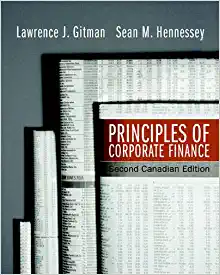Can you answer these?
Choose the alternative that BEST answers each of the following questions. 1. You invest $1 at 8% compounded annually. How long does it take for the $1 to double? A) B) C) D) E) 0.93 years. 1.08 years. 9.01 years. 13 years. The one dollar can never double at this interest rate. 2. Which of the below statements best describes the relationship between the duration of a zero-coupon bond and interest rate changes? A) B) C) D) E) The duration of a zero-coupon bond is shorter when interest rates increase. The duration of a zero-coupon bond is shorter when interest rates decrease. The duration of a zero-coupon bond is longer when interest rates increase. The duration of a zero-coupon bond is longer when interest rates decrease. None of the above. 3. Which of the following statements best describes the importance of the reinvestment assumption as it relates to bonds with varying coupons and lengths of maturity? A) The importance of the reinvestment assumption increases with a low coupon bond and a long term to maturity. B) The importance of the reinvestment assumption increases with a high coupon bond and a long term to maturity. C) The importance of the reinvestment assumption increases with a low coupon bond and a short term to maturity. D) The importance of the reinvestment assumption increases with a high coupon bond and a short term to maturity. E) The reinvestment assumption isn't related to coupons or maturities. 4. Which of the following scenarios can help mitigate agency problems between shareholders and management? A) A company executive buying a corporate jet. B) A CFO deciding to invest in a friend's company. C) The CEO receiving part of her salary in the form of company stock options. D) The CEO paying a hefty salary to his nephew who works at the company. E) The CEO moving the company's headquarters to Hawaii to enjoy the sun in his free time. 5. You sign up for a new credit card with a Quoted Rate, or Annual Percentage Rate (APR), of 15% compounded daily (assuming 365 days in a year). What is the Effective Annual Rate (EAR) on this credit card? A) 13.98%. B) 15.34%. C) 16.08%. D) 16.18%. E) 17.36%. 6. What is the annual yield to maturity on a 10 year 2.2% coupon bond paid semiannually with a $1,000 par value and a price of $989? A) B) C) D) E) 1.16%. 1.55%. 1.94%. 2.32%. 2.71%. 7. What is the effective monthly interest rate which is equivalent to a quoted rate of 13% with semiannual compounding? A) B) C) D) E) 1.055%. 1.507%. 0.976%. 13.42%. 1.065%. 8. You expect that interest rates will decline in the near future (contrary to the market consensus that rates will rise). Which bond would be your best investment if you are right? A) B) C) D) E) Zero coupon, 25 year maturity. 9% coupon, 5 year maturity. 2% coupon, 5 year maturity. 9% coupon, 25 year maturity. 2% coupon, 25 year maturity. 9. Michelle has been presented two investment opportunities by her bank. She can invest her savings either in a golden account which offers a quoted rate of 5.29% compounding monthly or in a supersaver account which offers a quoted rate of 5.33% compounding semiannually. If she has total savings of $156,000 and her investment horizon is four years, which investment should she choose and why? A)She should choose golden account because it brings $109.90 more in four years. B)She should choose supersaver account because it brings $115.41 more in four years. C)She should choose golden account because it brings $98.76 more in four years. D)She should choose supersaver account because it brings $98.76 more in four years. E)She should choose golden account because it brings $139.90 more in four years. 10. Which of the following statements are incorrect? I. II. III. A) B) C) D) E) A zero coupon bond has a greater price volatility compared to a 5% coupon bond assuming that they have equal time to maturity. If the coupon rate is equal to the yield to maturity, the bond is priced at par. If your risk preference is low volatility you tend to invest in relatively longer term coupon bonds rather than shorter term coupon bonds, all else being equal. Only I Only II Only III All of the above None of the above 11. All else constant, a coupon bond that is selling at a premium, must have: A) A coupon rate that is equal to the yield to maturity. B) A market price that is less than par value. C) Semi-annual interest payments. D) A yield to maturity that is less than the coupon rate. A par value which is different than its face value







